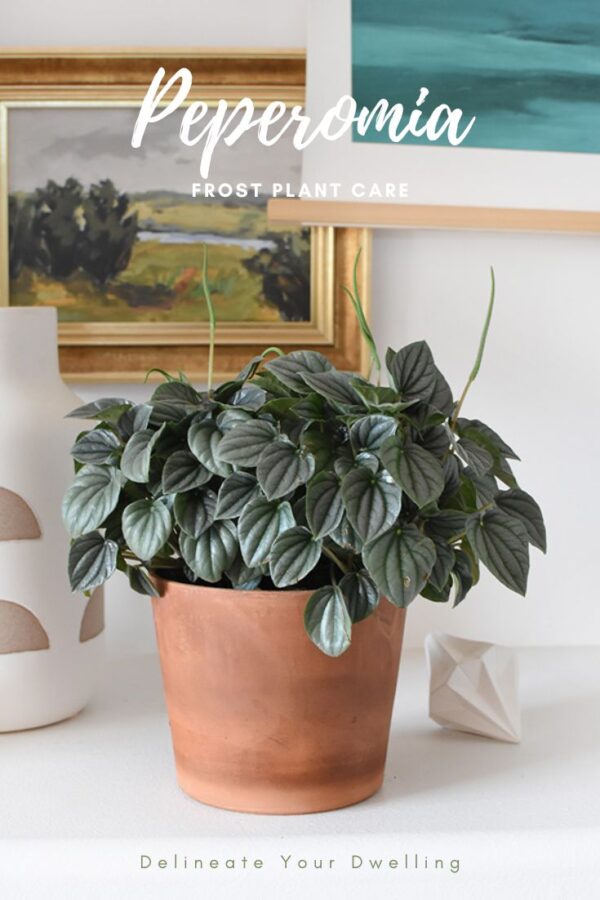How to propagate Rubber plants
INSIDE : Learn how to propagate Rubber Plants! Rubber plants are very easy to cut, trim and grow new branches. Check out all my tips for water propagating these plants.
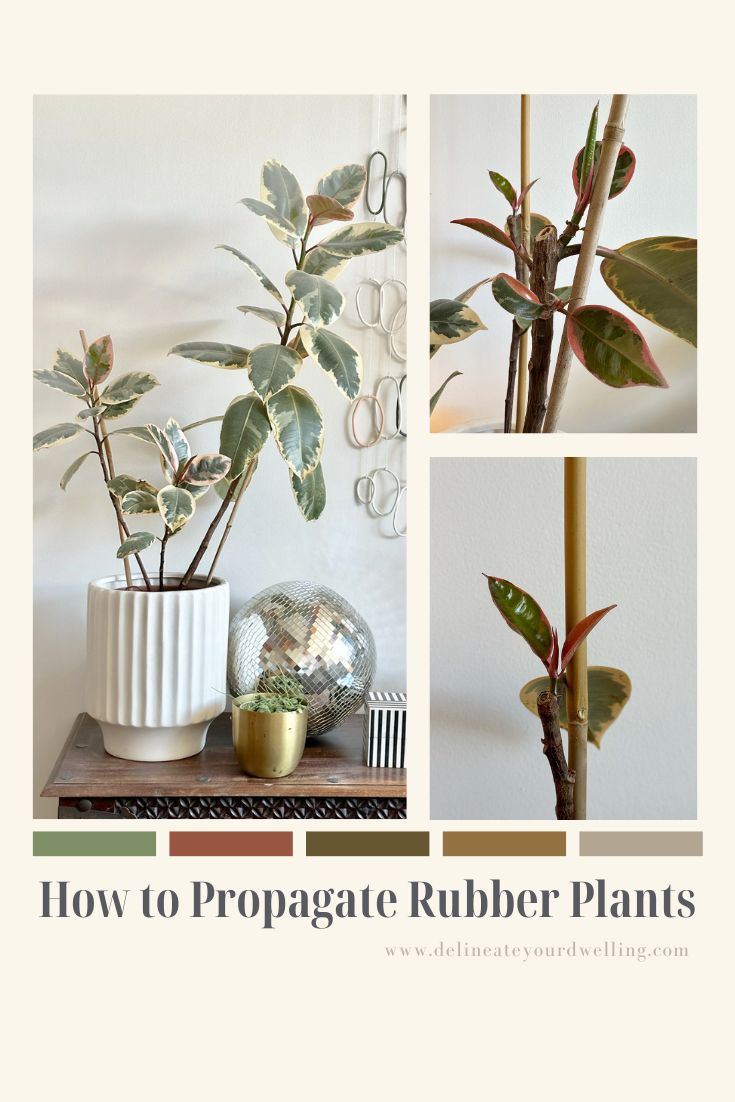
This post may contain affiliate links. See my full disclosure.
Water propagation is a popular and easy way to multiply your beloved rubber plant! I used water propagating all the time for many of my plants. You can learn more about the basics of Water Propagation for Plants here.
What are the easiest plants to water propagate?
- Pothos
- Avocado
- Ivy
- Fiddle leaf fig
- Coleus
- Christmas cactus
- Polka dot plant
- Snake Plant
- Rubber Plants
Supplies you need to propagate a Rubber Tree plant
- Healthy rubber plant
- Sharp, clean pruners
- Glass container (jar, vase, etc.)
- Room temperature water
- Optional : rooting hormone (not essential)
As you can see below, my Variegated Rubber Plant wasn’t horrible, but was just beginning to get long and lanky. Rubber plants with time have difficultly holding up their own trunks because of their large beautiful leaves.
I decided before my plant got too top heavy and tall, to trim it.
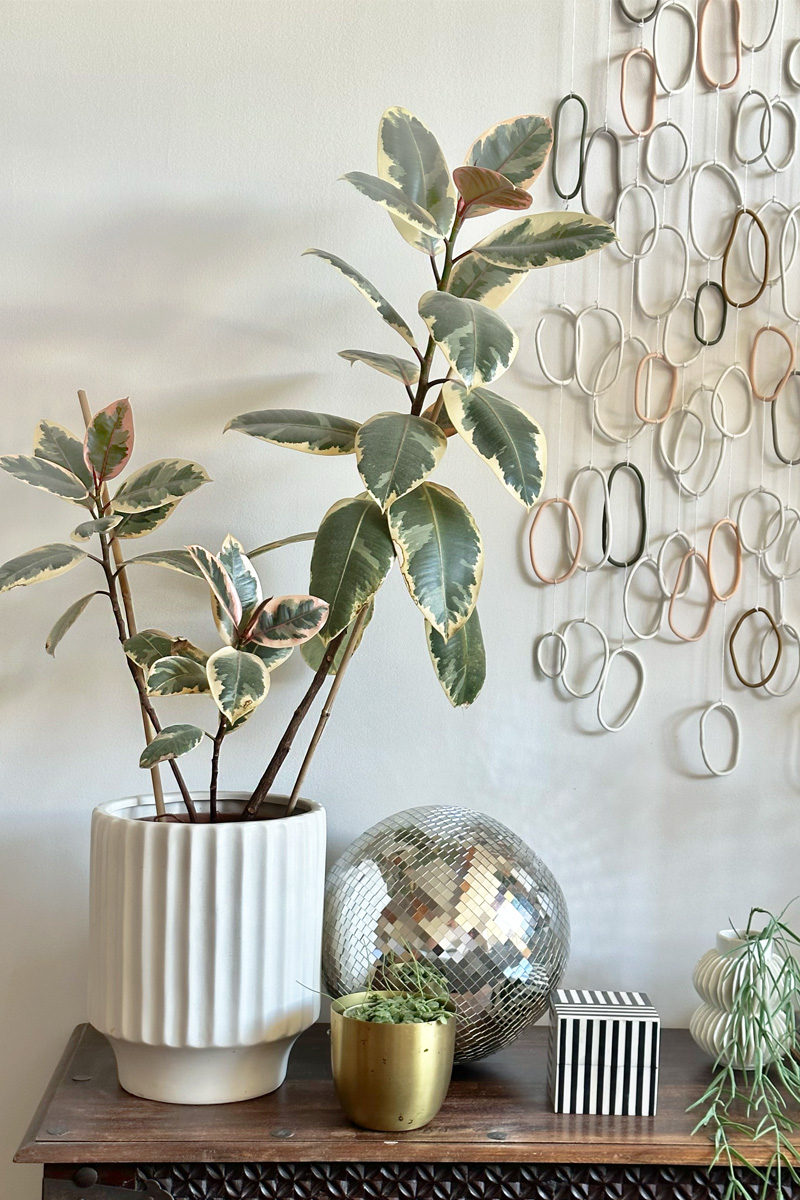
How to cut a Rubber plant stem
When you are looking to trim back your Rubber plant to propagate or because you want your plant to branch, start by looking a healthy stem. It also is essential that there is at least one node (the bumps where a leaf grows from).
Next, using clean hand pruners or scissors make a diagonal cut just above the node.
Immediately upon cutting your Rubber plant you will see white milky sap running out of the plant. The sap contains latex, which can trigger allergic reactions in some individuals, similar to those with latex glove sensitivities.
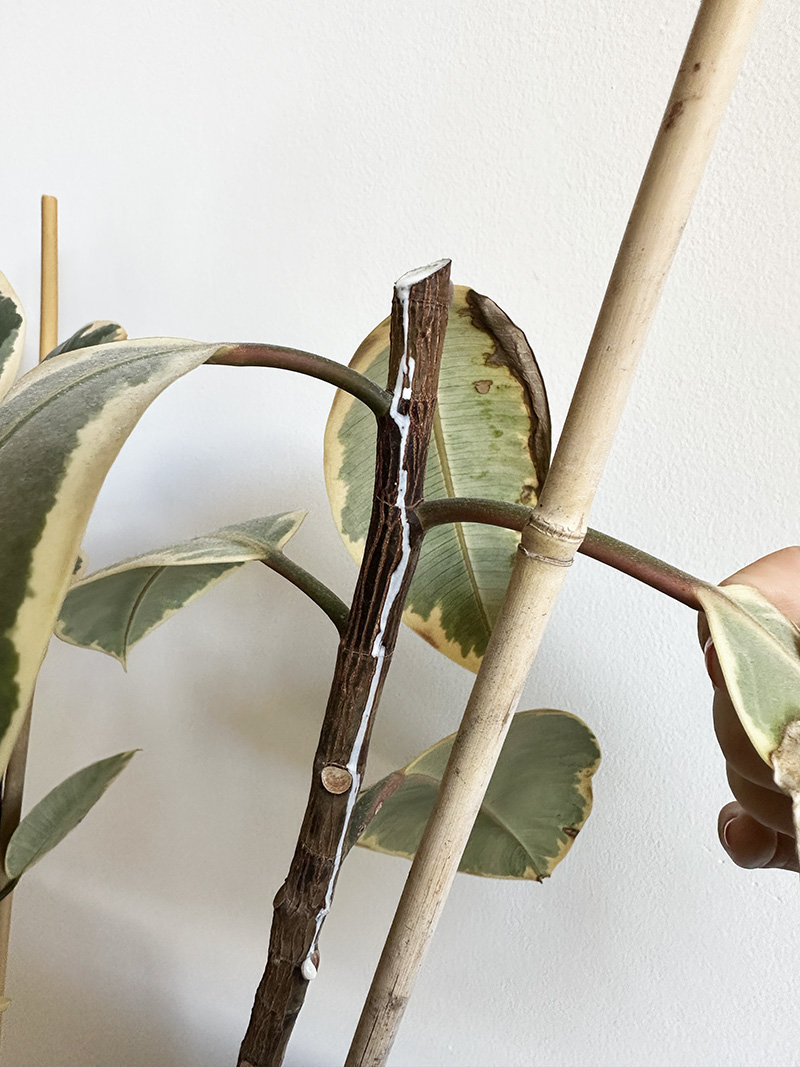
Be sure to wear gloves as a precaution if you have an allergy. Otherwise, make sure to wash your hands and keep the sap away from your eyes.
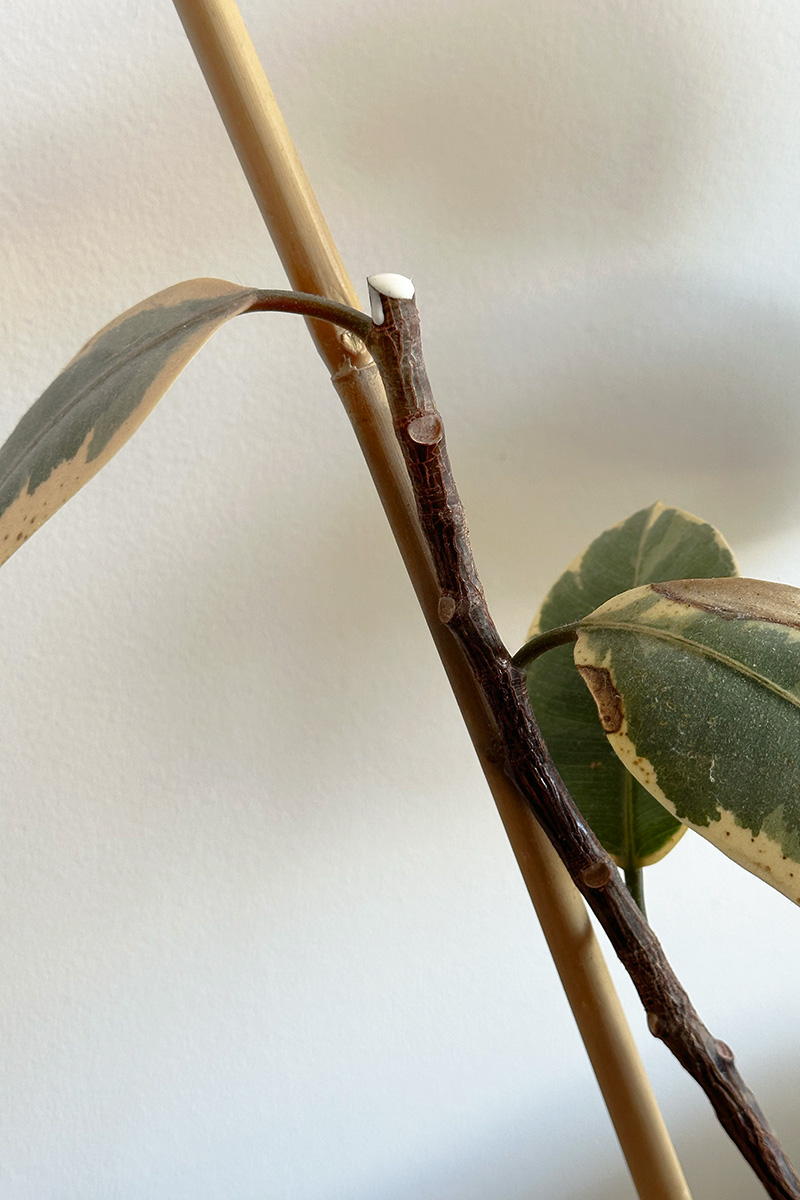
Remove lower leaves
Once you have made your cuts, remove any of the lower leaves that might be submerged in water later. These nodes are where you can anticipate the new roots growing from.
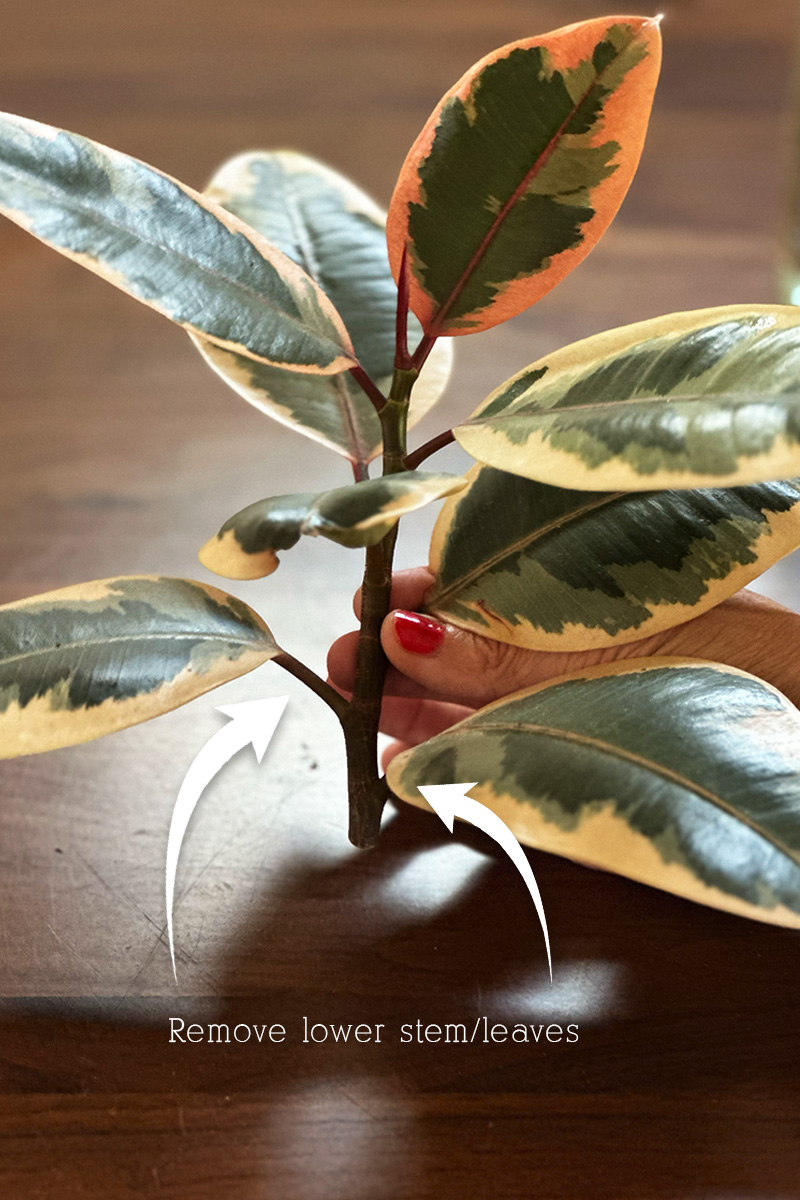
Prepare a glass container
Select a clean glass container (a vase or jar works perfectly for this) so you can watch for the root growth. Fill it with room temperate water, leaving about an inch of space a the top.
Place the cutting in the water by gently inserting the cut end of the stem into the jar. Again, make sure at least one node is submerged.
You will notice as soon as you place the rubber plant stem in the water, the water becomes cloudy with the sap. This is okay and the plant will stop producing sap shortly.
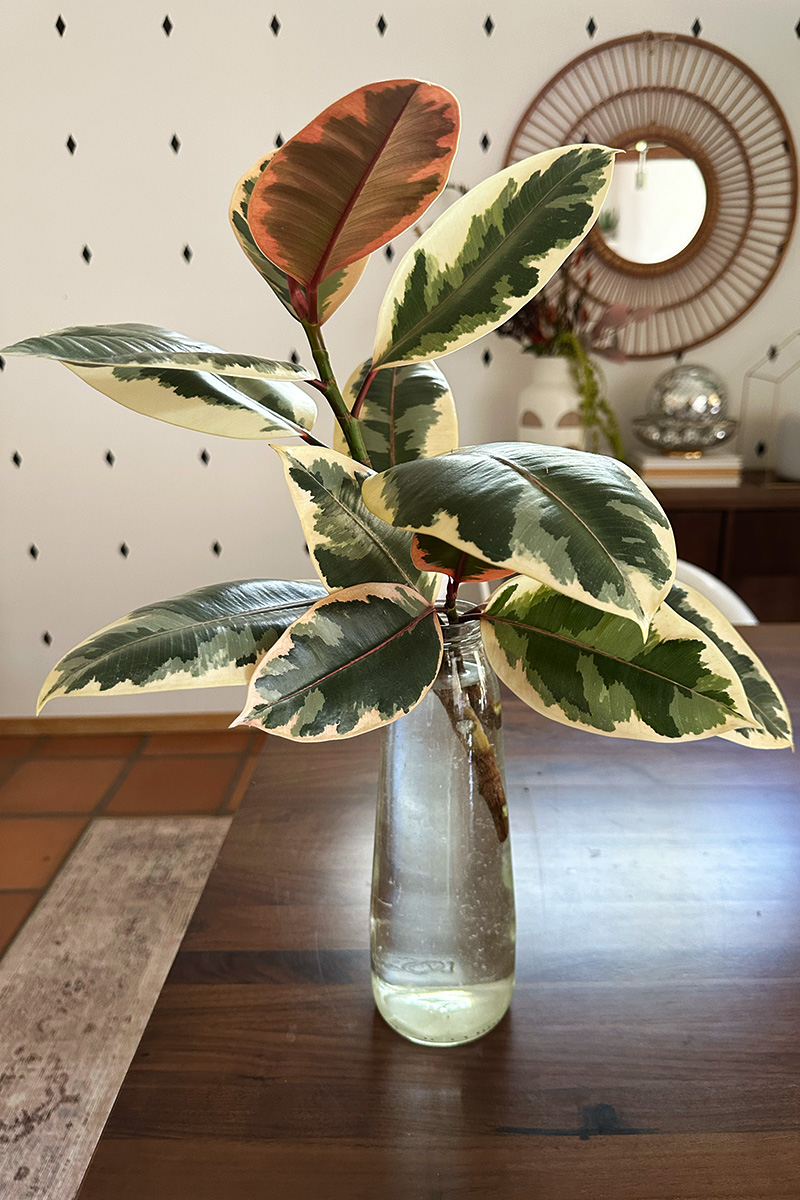
Find a good indirect spot
Place the glass container in a warm location with bright indirect sunlight. Be sure to avoid direct sunlight as it can easily heat the water too much and burn the new root growth.
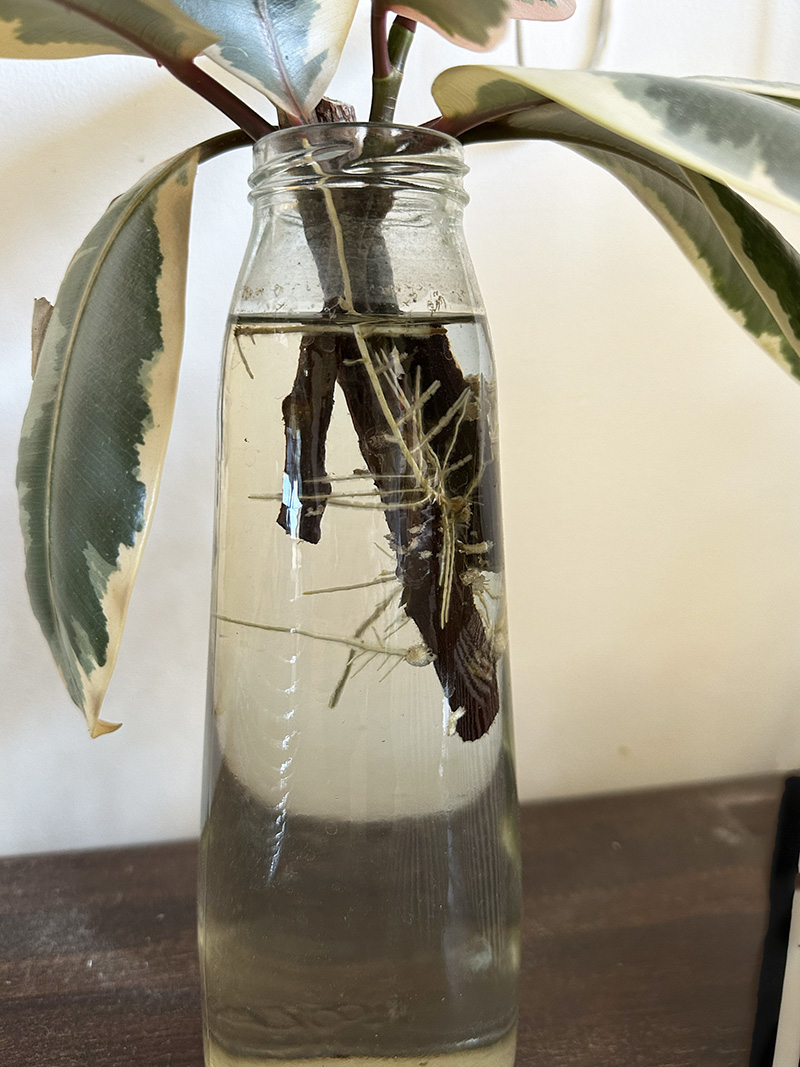
If you like plants, check out my indoor houseplant care ebook, Happy Houseplants! My Happy Houseplant ebook talks about how to not kill all the plants. It includes: – A helpful checklist to keep your plants alive + thriving. – A deep dive on 7 trending “it” plants (like those tricky Fiddle Leaf Figs!) -5 plant printables to hang in your home. Buy it HERE.
How long does it take Rubber Plants to grow new roots?
Be patient with your growth. Be sure to keep the roots fully submerged in water and change the water out completely every 1-2 weeks. The new roots can take anywhere from 4 to 12 weeks depending on various conditions.
FYI, The roots shown below are from about 3 or 4 months of growth.
Once the roots reach about 1-2 inches long, your plant is ready to be transferred to soil. However, you can also leave the plant in water until you are ready to replant it. I am waiting for spring to plant mine.
With a little care and patience, you’ll be enjoying a new rubber plant in no time!
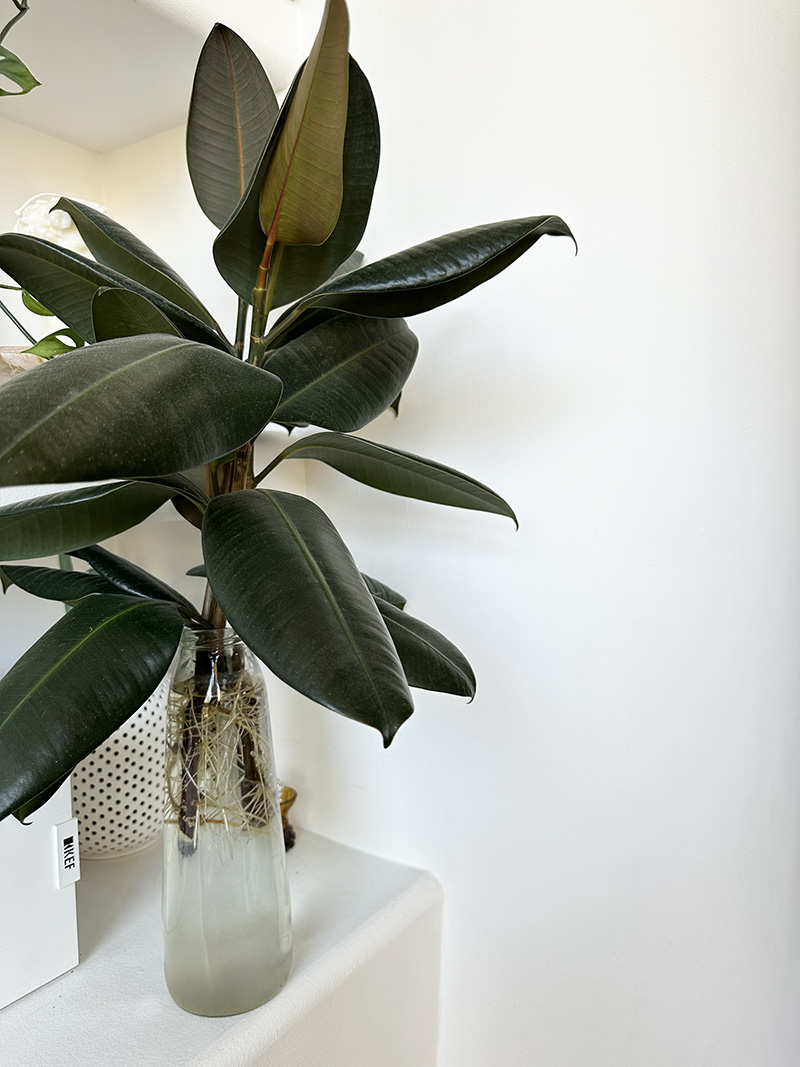
What do new Rubber Plant leaves look like?
After you cut your Rubber Plant, you will see new growth start to emerge. The new leaves will grow below your cut at the closest leaf node, the bump on your branch.
New leaves will be shiny and small, but as they grow you will their color change as well as their size!
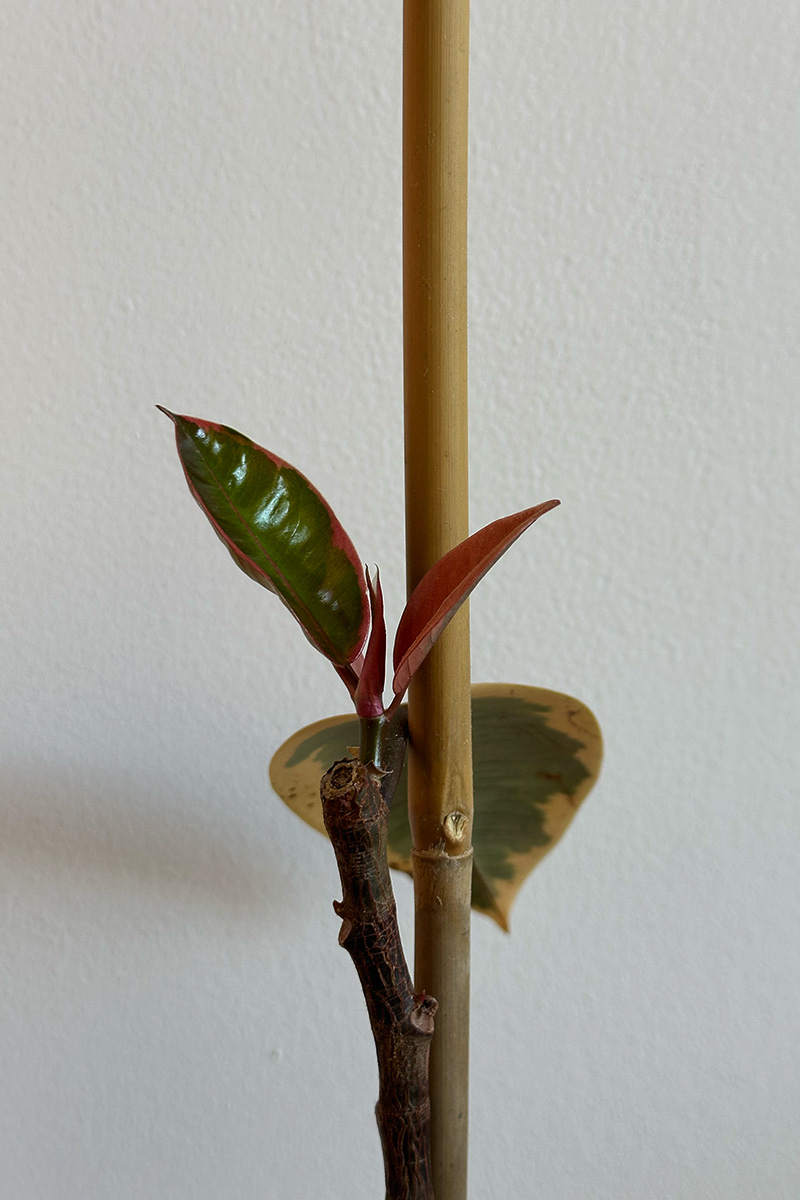
Be patient as your plant takes on new shapes and settles into less leaves helping with photosynthesis. With time those new baby leaves will mature and your plant will resume growing taller.
As you can see with mine, it’s still in a “regrowth” stage.
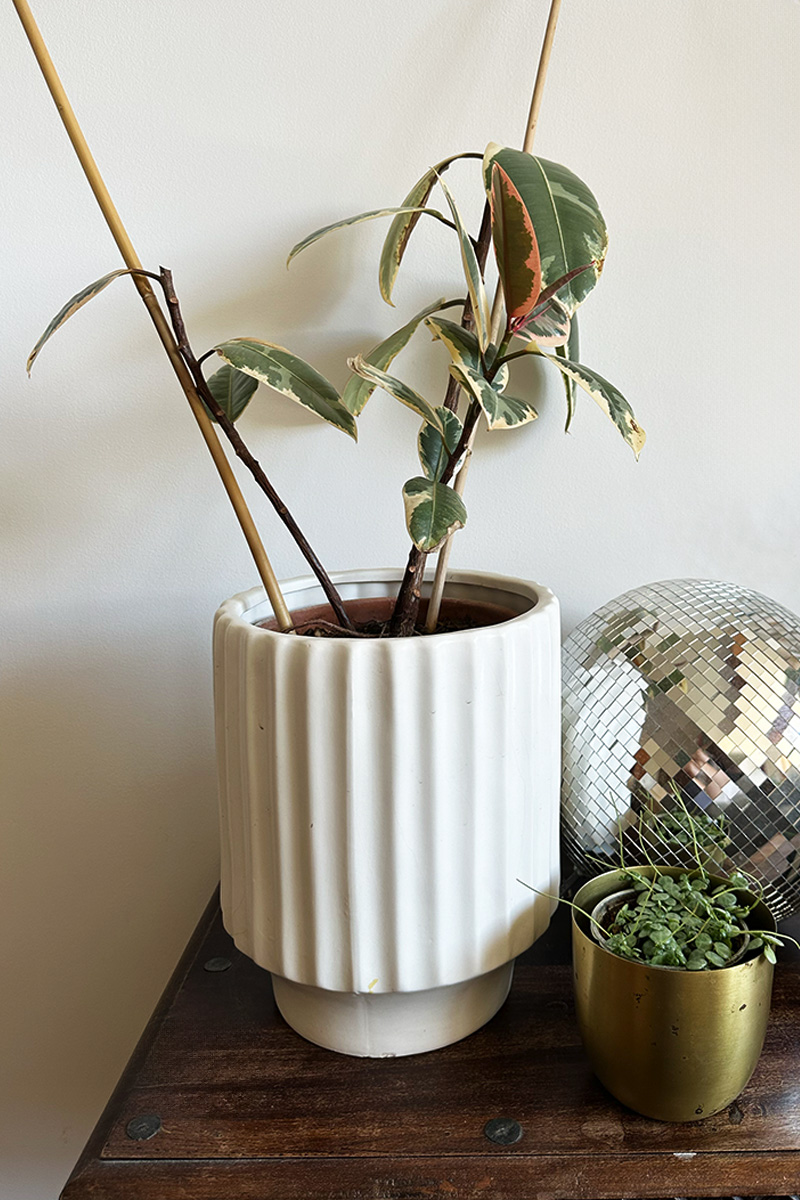
Once your roots are a few inches long and you feel can start to support the amount of plant above ground, you can safely transplant it into soil.
You do not need to start with a large pot. Allow the roots to become more established in the soil before sizing up to a larger pot size.
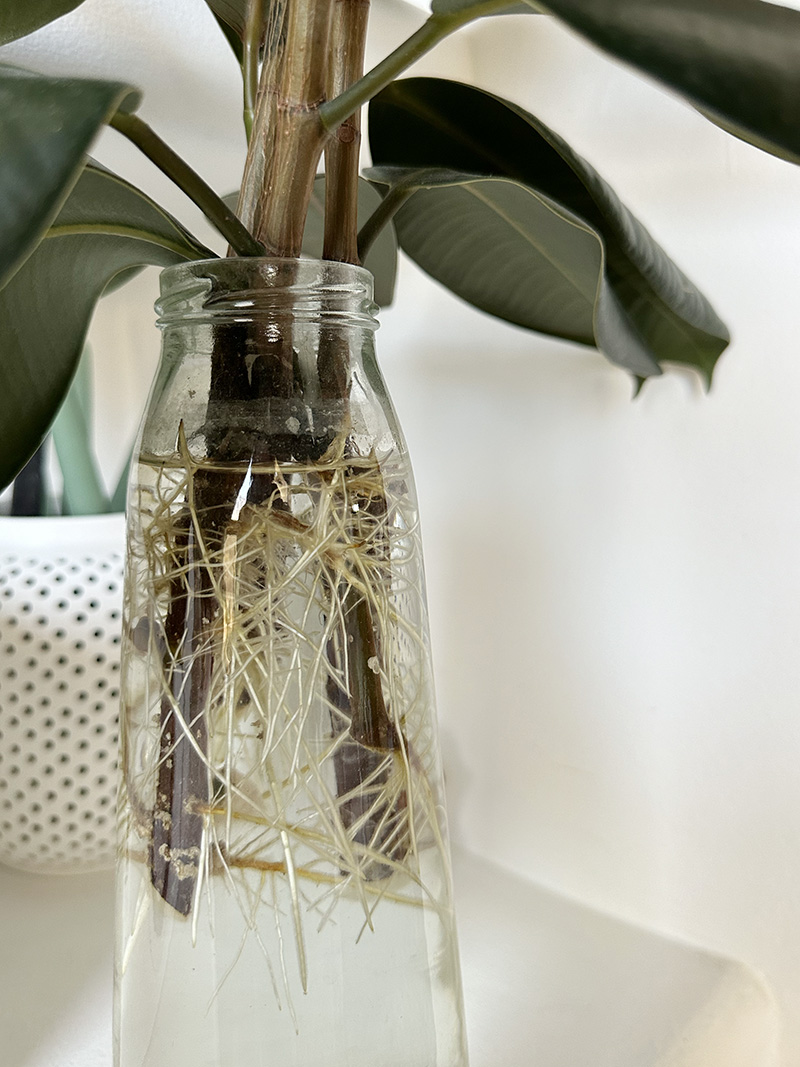
With a little care and patience, you’ll be enjoying a new rubber plant in no time!
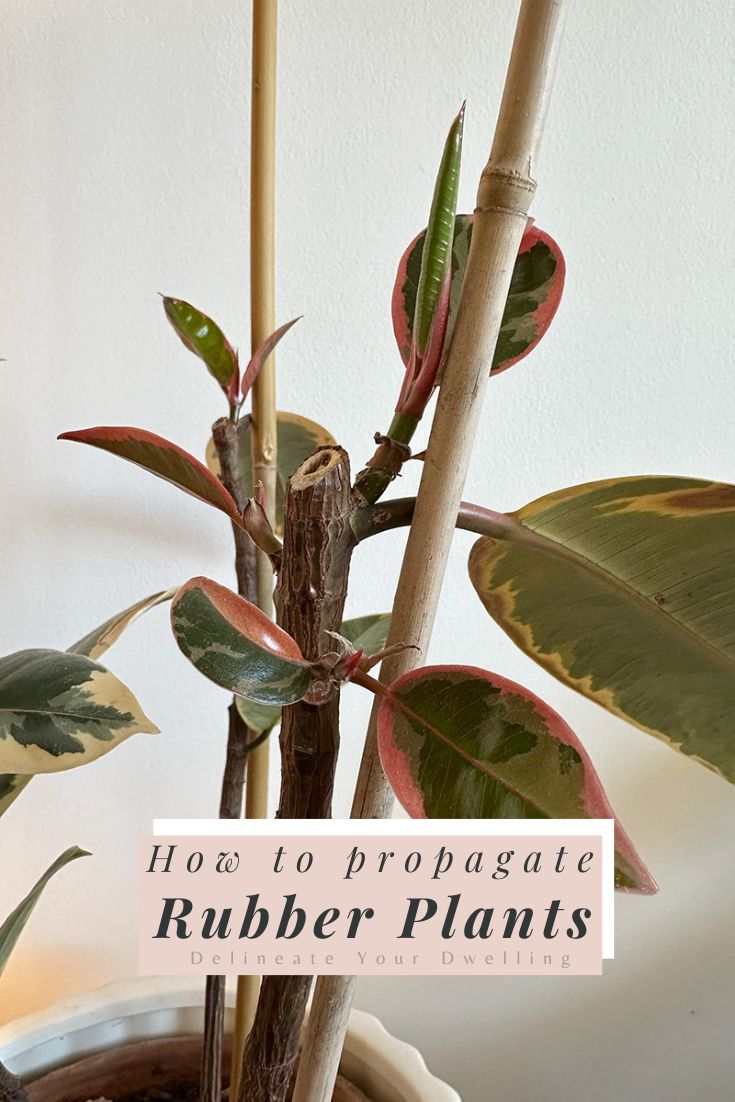
Looking for more tips on propagating plants? Check these out…
- Water Propagation for Plants
- How To Propagate Pilea
- Propagating Angel Wing Begonia
- Propagating Hoya Kerrii
- How to Propagate Rubber Plants
You might be interested in some of my other Plant posts:
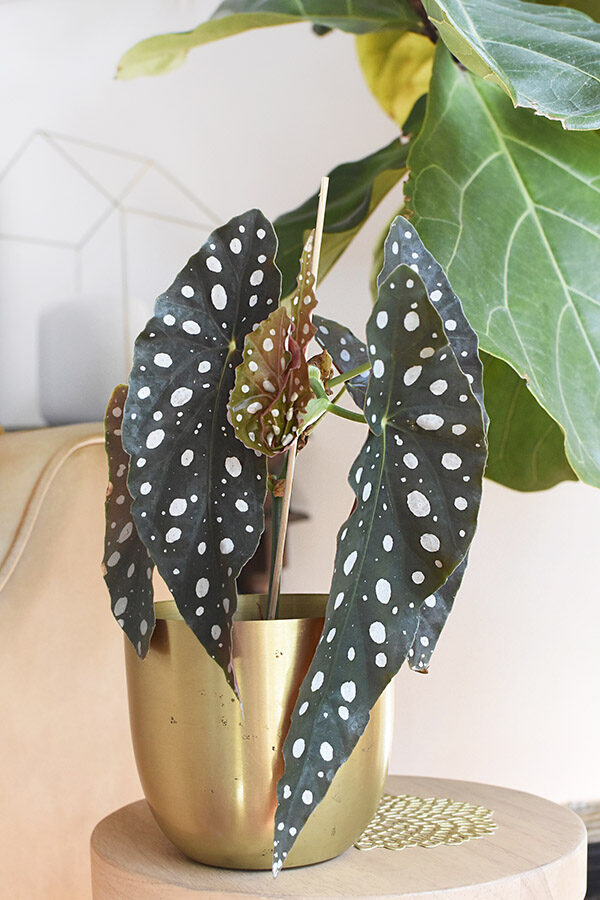
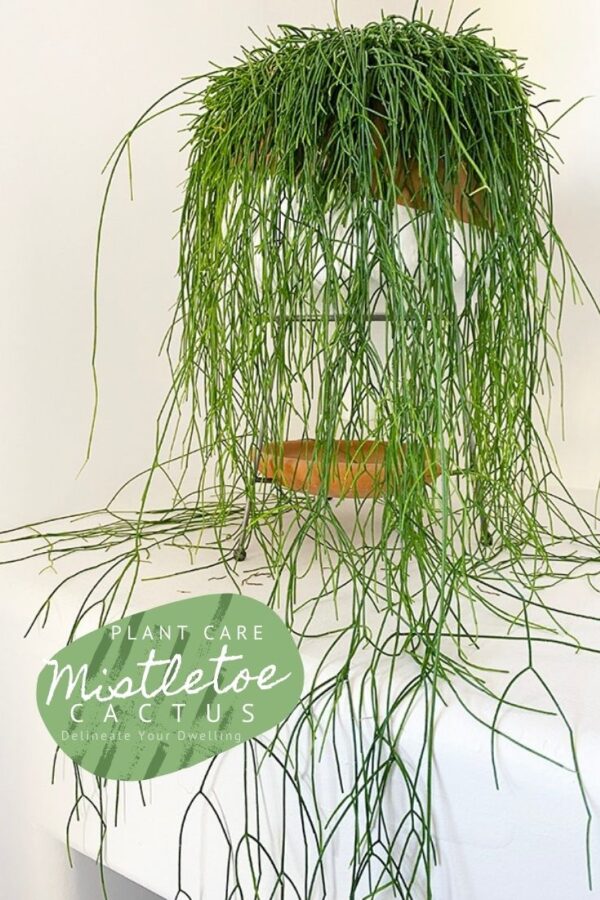
Peperomia Silver Frost Plant Care
